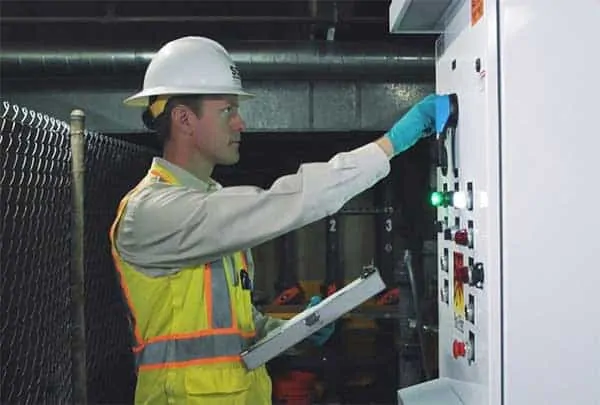


“An ounce of prevention is worth a pound of cure.” We’ve all heard that proverb before, and it’s true – it’s generally easier to stop something from happening than to repair the damage after it has happened.
This is almost always the case when it comes to environmental incidents – it is cheaper to prevent the incident from occurring than paying for the cleanup and impacts the incident caused. Many of SCS’s service areas are specifically focused on prevention and optimization – doing the job in ways that are better, safer, and more protective of human health and the environment.
Environmental insurance is a product that most SCS clients likely have in place in some form to protect their facilities, employees, and neighbors from the harmful impacts of incidents that can introduce contamination into the air, soil, groundwater, or surface water. The types of coverage provided by environmental insurance policies vary in both extent and cost, and many factors, one of which being risk, drive those costs. When an insurance company is underwriting coverage for a new or existing client, the risk associated with that coverage is carefully evaluated. What the client (insured) does, how they do it, their safety record, their history of previous environmental issues, and other factors are all taken into consideration when writing an environmental insurance policy and the associated premium and deductible are determined.
To reduce the up-front costs (the premium) associated with carrying the necessary and appropriate amount of environmental insurance, the insured can do several things. One is to increase their deductible, but in the event of an incident, that could end up costing the insured more on the back end (i.e., costs expended to investigate and remediate an incident). Insureds, their brokers, and the insurers will work closely to balance premium costs and deductibles so that the costs associated with addressing an incident are not detrimental.
An insured shouldn’t reduce the type and amount of coverage – that could put them in a bad financial (and legal!) position. A more prudent choice, one that has many potential positive aspects and makes sound business sense, is reducing risk and therefore the costs associated with an environmental insurance policy that is based on coverage and risk.
SCS Engineers develops proprietary remote monitoring and control software for landfills, manufacturing, and industrial facilities called SCS RMC®. The software provides remote real-time viewing, analysis, and control of equipment and systems critical to safe operations and production. A network of sensors and Machine-to-Machine (M2M) applications enable operations teams to be alerted immediately (via cell phones, computers, tablets) of any operational issues that could potentially result in an environmental incident.

The application reduces reaction time, labor costs, and potential associated impacts. In this case, SCS RMC® puts the client’s decision-making in front of a problem rather than reacting to potential aftermaths, proactively reducing the potential environmental risks of their operations.
SCS’s service areas, including those listed here, are particularly focused on providing our clients with assistance in designing, building, and maintaining sustainable solutions, reducing risk, and helping to foresee and adapt to environmental, social, and regulatory changes:
SCS’s professionals are available to assist our clients in their discussions with brokers and insurers regarding how our environmental services and technologies can potentially reduce risks associated with their operations. We do this by providing creative and cost-effective solutions and guidance that can prevent environmental incidents from occurring and reducing the nature and extent of associated impacts.
We can help you select and implement the “ounce of prevention” so that you won’t have to face the “pound of cure.” This will proactively reduce operational risks, which can, in turn, help facilitate the positive brokering of more favorable environmental insurance coverage, premiums, and deductibles.

Inductive Automation® announced the software firm now recognizes SCS Engineers as a Premier Integrator. Premier Integrators have a high level of commitment, professionalism, and competency using the Ignition software. They must consistently produce high-quality work and must consistently demonstrate successful projects with very satisfied end-users.
SCS uses Inductive Automation’s Ignition supervisory control and data acquisition (SCADA) software in their solution because it is a proven state of the art software, which works well with cloud-based systems and the internet of things (IoT). It allows clients to easily control, track, manage and report on their processes.
Large landfills, counties with multiple landfills, and private waste management firms have been waiting several years for SCADA software to catch up to their business needs. Landfill operations are extremely complex and expensive since they monitor and manage multiple systems to protect the public from contamination to the air, water, or soil. There are typically multiple operations active on many sites, such as waste recovery, recycling, composting, Gas Collection and Control Systems (GCCS), and renewable energy plants.
SCS Remote Monitoring and Control®, or SCS RMC® provides a next-generation option to monitor and control systems, and see the data collected and the systems in action. It allows users to control their systems remotely, collect data and use the data to enhance their productivity, reduce their operations and maintenance (O&M) costs, and reduce their environmental risk. Other offered services include 3D imaging from drones and virtual reality (VR). SCS uses aerial data collected via drones to compose topographic mapping, 2D images, 3D renderings, GIS, thermal, infrared (IR), and methane leak detection for waste facilities. The SCS RMC® team can take rendered models and apply them into virtual reality (VR) headset as well, which allows decision-makers at waste management facilities and organizations to “walk the site” from anywhere.
Current clients save Operating & Monitoring (O&M) costs and reduce human error by generating internal and regulatory reports automatically, using data automatically collected by the system. They can also receive instant notification of malfunctions and can troubleshoot these notifications remotely.
Not only for landfills, until recent years the public did not realize the long-term value of recycling nor the associated costs. Some clients use SCS RMC® to monitor dumpsters and recycling receptacles for collection. This helps keep waste and recycling inside the container, collection schedules more efficient, and overall operations less costly.
Manufacturing, industrial facilities, and ports use remote monitoring and control for real-time viewing, analysis, and control of equipment and systems critical to production and safe operations, often for air monitoring.
Galen Petoyan, Senior Vice President of Field Services states, “We fully embrace SCS RMC® within SCS Field Services® because the software allows us to provide more value to our clients; our technicians and engineers can avert problems, and when needed, provide rapid, efficient, and accurate analysis and action.”